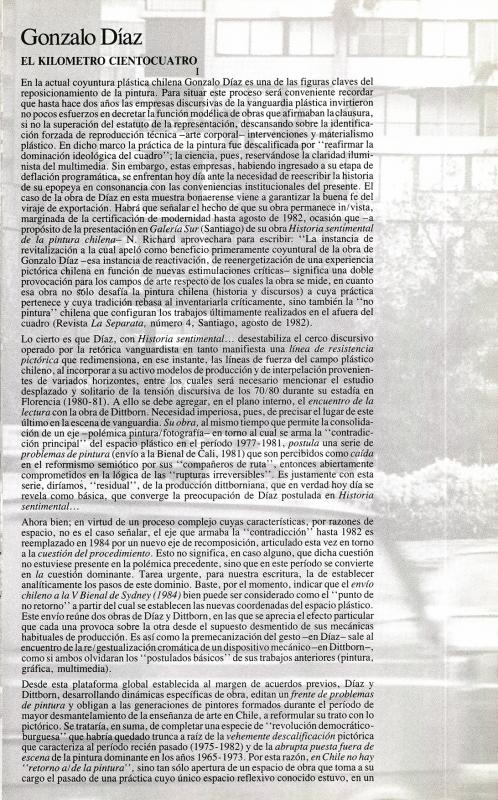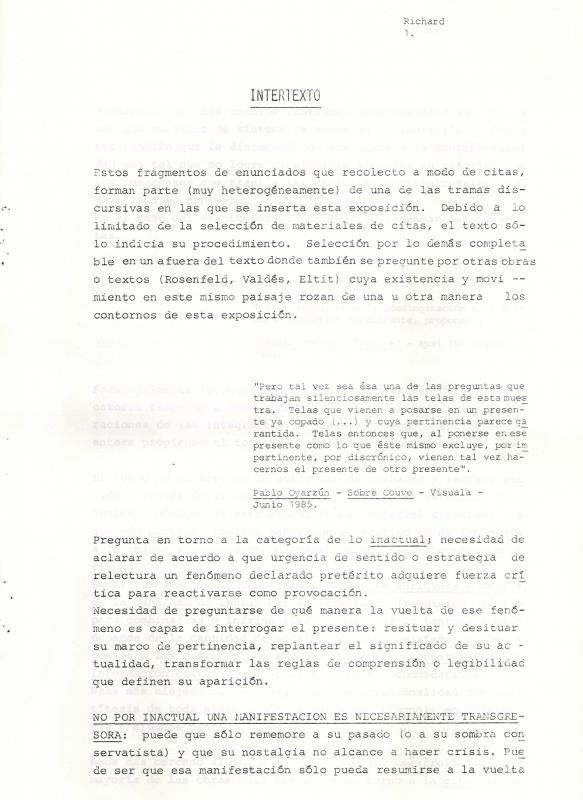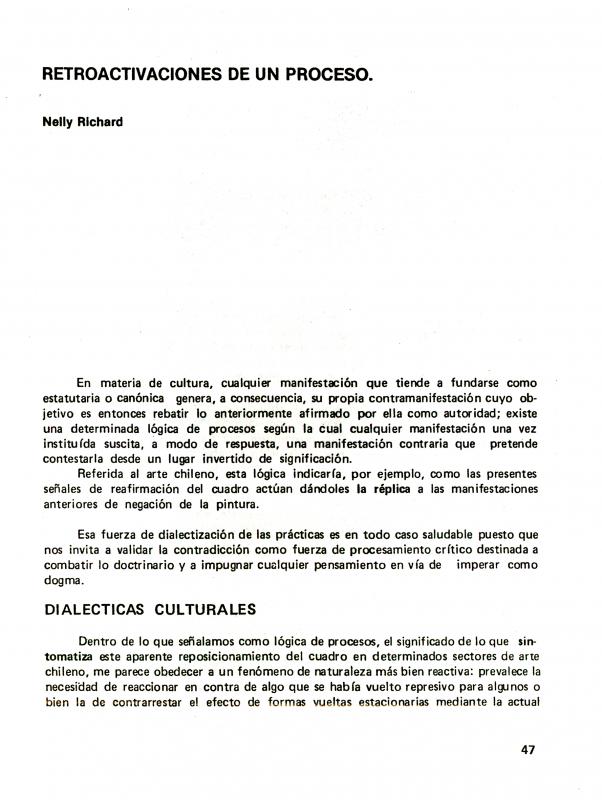"Inversión de escena," the text written by Nelly Richard (b. 1948), was read at a debate that took place at the Galería Sur in Santiago, Chile, during Provincia Señalada (1983), the exhibition that was co-curated by the artists Carlos Leppe and Gonzalo Díaz, both of whom were members of the so-called Escena de Avanzada and were featured in Margins and Institutions: Art in Chile Since 1973, published by Richard in 1986. The book focuses on works that reformulated the connection between “art and politics” in semiotic pieces that relied on nonrepresentational signs and explored different media and supports beyond the realm of traditional art.
Sixteen young painters showed their work at Provincia Señalada: Mónica Álvarez, Francisca Arriagada, Asunción Balmaceda, Rodrigo Cabezas, Daniel Dannemann, Roberto Di Girolamo, Carlos González, Nury González, José Diego Hernández, Cecilia Juillerat, Ana Luisa Kohon, Francisca Núñez, Jacques Sterenberg, Luis Valdivieso, Rodrigo Vega, and Yerko Yankovic. As determined by the curatorial plan, the artists replaced their works with new ones after the exhibition had been open for two weeks. Another particularity of the curatorial approach was that it was positioned as a response to Richard’s Conceptualist reading of contemporary Chilean production, informed by the very same artists who were part of it, that is, Díaz and Leppe. The event was thus part of the ongoing debate in art circles at the time, especially in regard to where painting stood in the push for renewal driven by the censorship and repression of the military dictatorship (1973–90). [For more information about this debate, see the following in the ICAA Digital Archive: "Gonzalo Díaz: El Kilometro cientocuatro" (doc. no. 734722) by Justo Pastor Mellado; see also "Intertexto" (doc. no. 734686), "Return to the pleasurable" (doc. no. 743686), and Richard’s own "Retroactivaciones de un proceso" (doc. no. 730159)].
At this time, the Chilean art world was embroiled in a heated debate that pitted painting against contemporary practices. Richard was among those who criticized the role of painting, insisting that its embrace of subjectivity was at odds with the country’s complex sociopolitical situation. Her real objection, however, was not to painting itself—she had, in fact, studied the work of artists such as Juan Domingo Dávila (b. 1946) and Eugenio Dittborn (b. 1943)—but to the demand for autonomy in the field of painting. That is, the self-referentiality associated with an artist’s inner life. In the official art scene (set against the censorship of the time) there was widespread support for contemporary painting that explored inner worlds and encouraged the artist’s expression and subjectivity. In "Inversión de escena," the author’s concern in that regard underscores her fears about what happens when art forfeits its critical potential because it can no longer have a transformative impact during a time of extreme repression at both a governmental and a personal level.




